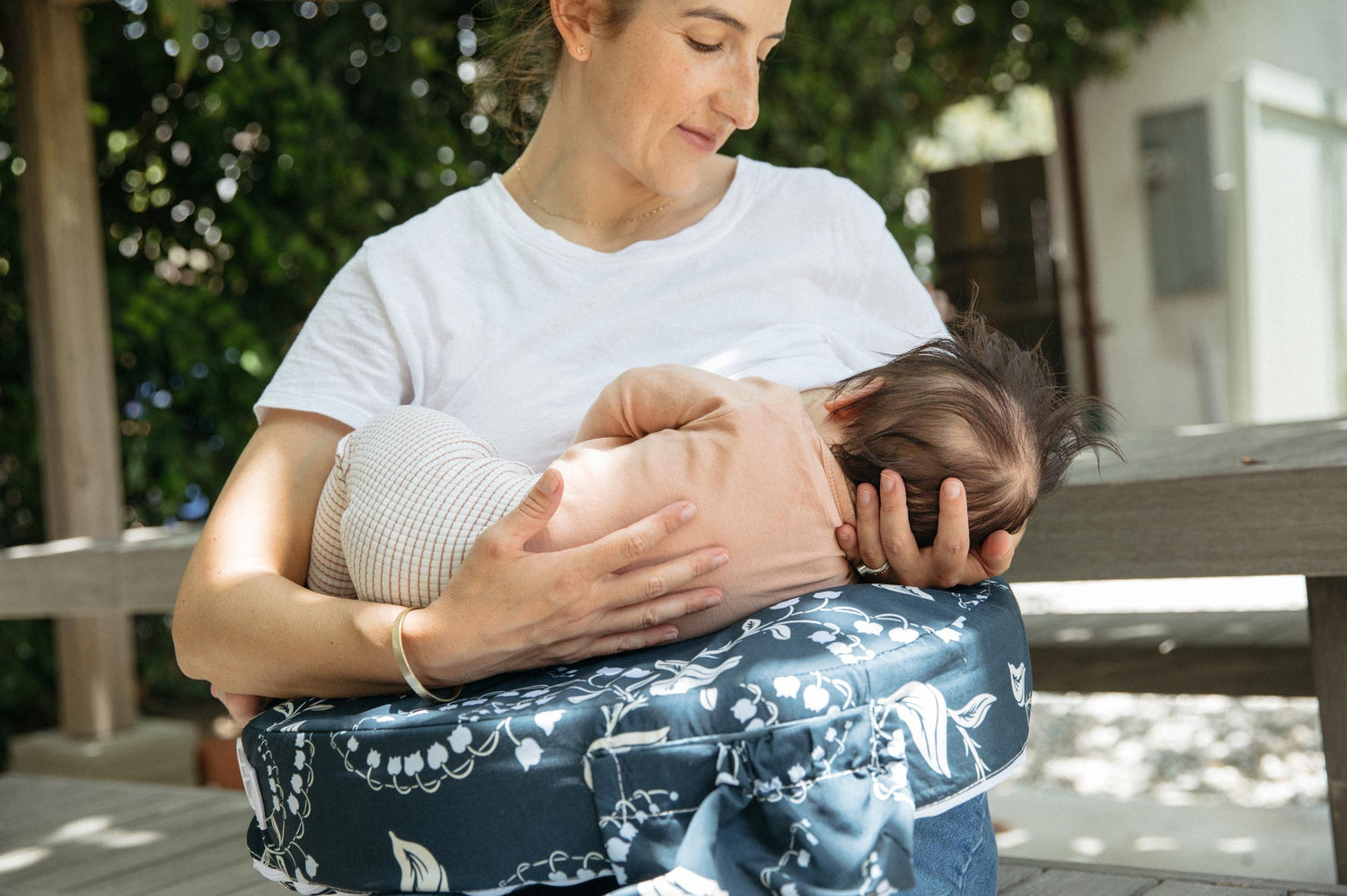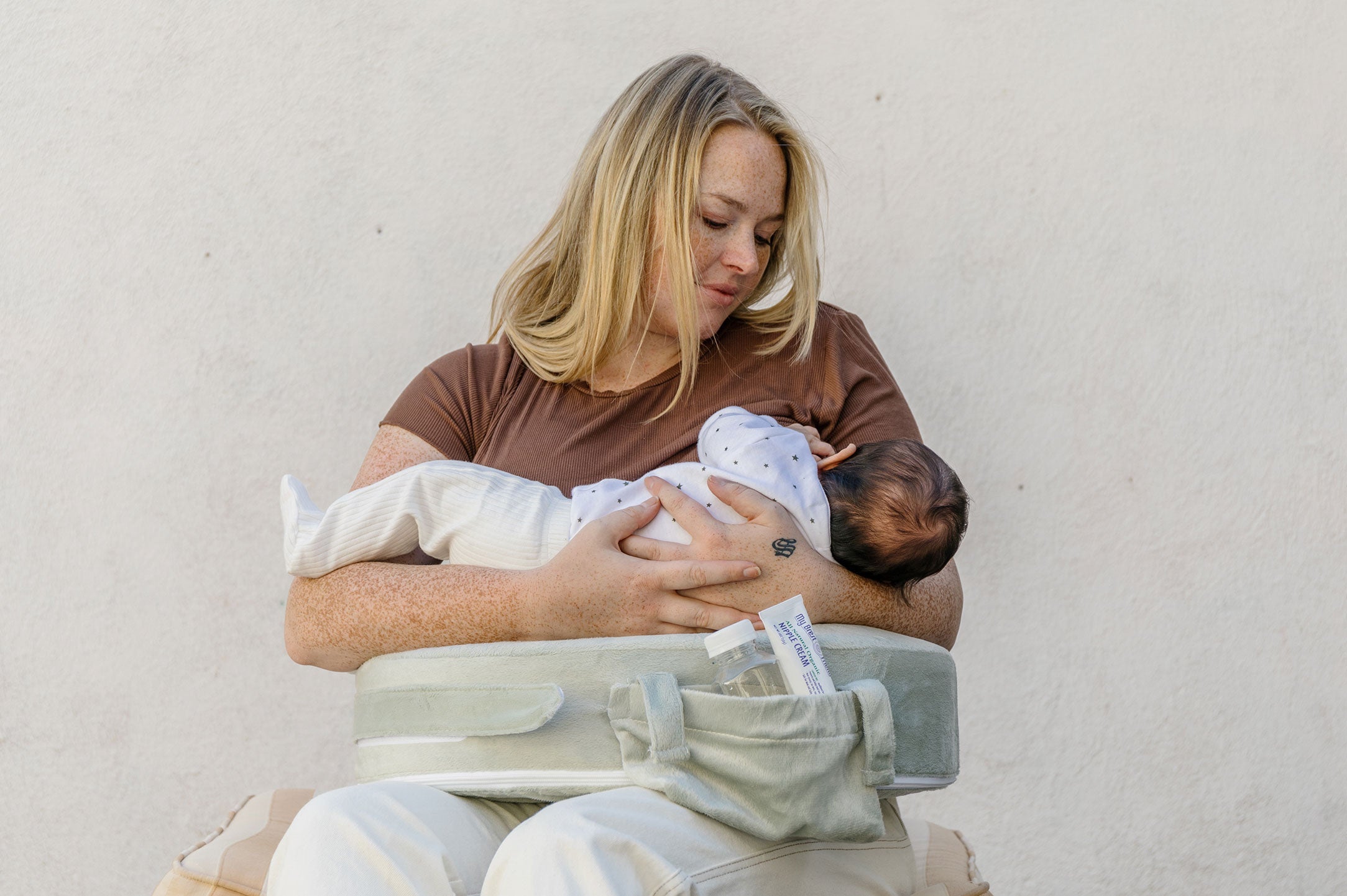Cutting through the confusion about a vital tool for the newborn months
By Lauren Kirchner | January 9, 2024

A nursing pillow isn’t the biggest ticket item on your baby registry, but it’s one that you’ll probably spend the most time with, whether you’re breastfeeding or bottle-feeding. Newborns can eat as often as every one or two hours, day and night. A good pillow helps your baby rest comfortably at just the right height while helping you avoid a sore back and shoulders.
But it’s important to buy the right kind, and to use it the way it’s intended, say safety experts. Over 150 babies died in incidents involving nursing pillows between 2010 and 2022, according to the Consumer Product Safety Commission. Nearly all of those involved babies six months old or younger. These dangers have also been highlighted in previous investigations by Consumer Reports and others.
The risk appears to be greatest if babies nod off, which often happens at the end of feeding. The pillows are meant to be used only when a baby is supervised and awake. If babies are left asleep and alone on top of a pillow, they may roll off and get injured. Or they may fall asleep in such a way that their faces are pressed against either the pillow’s side or their caregivers’ bodies, risking suffocation. Or, if babies’ heads are propped up on pillows, their bodies can slouch too far down and press their chins against their chests, blocking airflow.
Any of these dangerous situations can be even riskier for a baby if the caregiver falls asleep. It’s also dangerous to place the pillow into another sleep environment, like a crib, bassinet, or play yard.
Experts say the most important thing to know about using a nursing pillow safely is to never, ever use it for sleep.
"A nursing pillow is primarily and reasonably intended to provide direct support to the adult caregiver,” says Ashita Kapoor, associate director of product safety at CR. “If a baby does fall asleep while feeding, it is important to place them on a firm, flat, non-inclined surface in a safe sleep environment, such as a crib, bassinet, or play yard."
The CPSC recently commissioned a study from Boise State University researchers to examine 50 incidents involving nursing pillows and infant lounging pillows that had been reported to the agency in which babies died or got hurt.
“The dangers that we identified occurred primarily when the pillows weren’t being used for nursing—so when they were being used for sleeping or lounging,” says Erin Mannen, PhD, an assistant professor of mechanical and biomedical engineering at Boise State University and the lead author of that study as well as the CPSC-commissioned study on inclined sleepers. “So only using the pillows for nursing while both mom and baby are awake is something that parents can safely do.”
In addition to investigating the incident reports, Mannen and her team also developed recommendations about how nursing pillows should be designed and tested. The study concluded that they should be tested for firmness, and that those that are too soft should then have to pass a test for airflow. It also recommended certain changes to pillows’ shapes; for example, sharper, firmer corners and fewer soft curves would make it less likely that they would or could be used for sleep.
In response to the reported injuries and deaths, and this new research, the CPSC recently proposed a new rule about the shape, design, and materials for nursing pillows that incorporated many of the study’s recommendations. To be sold in the U.S., nursing pillows would have to be firm enough to not conform to a baby’s face, be made in a shape that could not trap the baby’s head, not have any infant straps or restraints that might lead caregivers to incorrectly think that they can leave babies alone in them, and have labels describing the risks of using them for sleep.
Not surprisingly, some companies that sell nursing pillows—many of which may not meet these new standards—have objected to the proposal.
The Breastfeeding Infant Development Support Alliance, a lobbying organization made up of manufacturers, retailers, and other groups, has framed it as a political issue. “Women’s rights are being gutted—and the ability for women and parents to choose how they feed their baby is next on the chopping block,” reads the BFIDSA website. (BFIDSA did not respond to CR’s request for comment.)
But CR’s safety experts say the proposed standards ensure that products being sold to new parents are safe.
“It’s crucial for there to be clear standards that apply across the marketplace,” says William Wallace, CR’s associate director of safety policy. “The CPSC’s proposal would take reasonable, necessary steps to make nursing pillows safer. The new rules would help protect babies and prevent the kinds of tragedies that have been documented since 2010.”
CR safety experts and advocates have written a letter in support of the agency’s proposal, as has the American Academy of Pediatrics. It’s unclear whether the rule will come to pass, or when—though staff at the CPSC is aiming to finish drafting a final rule no later than September 2024.
In the meantime, CR’s safety team has some advice for you based on what is on the market right now. We bought several popular pillows for our experts to review, and share what they like (and don’t) about each.
Based on our reading of the research study and the CPSC’s plans, the experts believe that the top two on our list, made by My Best Friend and Frida Mom, would likely pass most, if not all, of the new testing requirements.
My Brest Friend: Good and Firm, Easy to Use Safely

The My Brest Friend Original Nursing Pillow is firm, which minimizes suffocation risk. The molded shape and buckle help keep it in just the right position around your waist. It’s got good support on the top and is shaped so that the baby is stable. It also has a unique angular aspect that makes it unlikely that anyone will leave the baby there to sleep after a feeding session.
Erica Estrada, COO of My Brest Friend, says that, unlike softer, U-shaped pillows, My Brest Friend’s “firm platform and sharp angles and edges” make it clear its sole intended use is for feeding.
Frida Mom: Also Firm and Snug, if Used the Right Way

The Frida Mom Adjustable Nursing Pillow is also firm up top, which is good, but the bottom is squishy, so you need to make sure you don’t use it upside down.
Boppy: Too Curved, Too Soft

The Boppy Original Support Nursing Pillow is popular, but its cylindrical donut shape could make it easy for a baby to roll off. It’s also squishy, and, well, pillow-like, so parents may be tempted to use it as a pillow for sleeping or lounging, or to put it in the crib with the baby.
Dream On Me: Too Pillow-Like

The Dream On Me Beeboo Nursing Pillow and Positioner is like the Boppy, but just a bit flatter. Despite the company’s name, this is not a safe place for a baby to sleep, either.
Momcozy: Too Formless, Very Little Support

The Momcozy Multifunctional and Adjustable Nursing Pillow is so soft and formless that it arrived at CR’s lab compressed in a small vacuum-sealed bag. It’s not nearly firm enough, say our experts.
Naturepedic: Potentially Problematic Shape

The Naturepedic Nursing Pillow wraps around your back in a way that feels comfortable, but its shape could increase the risk of entrapment—meaning, if a baby is placed in the center, their head could get stuck.
Dock-a-Tot: A Safer but Impractical Shape

The Dock-a-Tot La Maman Wedge Nursing Pillow’s small size and odd shape means a baby would be unlikely to fall asleep on it or get its head stuck in its crescent, but it may not be very comfortable or useful for feeding a baby for long periods.
CR reached out to these nursing pillow companies for comment; none except My Brest Friend provided one.
By Lauren Kirchner




Leave a comment
This site is protected by reCAPTCHA and the Google Privacy Policy and Terms of Service apply.